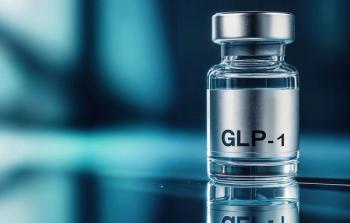
Fail Fast, Save Smart: A Silicon Valley Approach to Drug Development Could Cut Costs and Improve Access
Key Takeaways
- Late-stage trial failures significantly increase drug development costs, leading to higher drug prices to offset financial losses.
- Utilizing real-world data (RWD) and real-world evidence (RWE) earlier can improve decision-making, trial design, and resource allocation.
By using real-world data (RWD) and the insights derived from it, real-world evidence (RWE) earlier in research and development, drugmakers can make more informed decisions and reduce the financial risks that drive up drug prices.
In biopharma, failure is the rule, not the exception. Most drug candidates never make it past clinical trials. And when they fail, especially in later stages, the impact is severe: millions of dollars lost, years of work rendered moot, and ultimately, even higher prices for patients at the pharmacy counter.
That’s not innovation. It’s inefficiency.
The average cost of developing a new drug is now estimated at $2.23 billion. Meanwhile, 40 to 50 percent of Phase III trials fail, despite representing the most expensive stage of development. These late-stage trials can cost $31 million to over $214 million, depending on the therapeutic area, making them the costliest single point of failure in the drug development pipeline.
In other sectors, failure is expected but managed differently. In the tech industry, companies are encouraged to “fail fast and fail early” to reduce exposure and optimize learning. Biopharma should adopt a similar mindset. By using real-world data (RWD) and the insights derived from it, real-world evidence (RWE)earlier in research and development, drugmakers can make more informed decisions and reduce the financial risks that drive up drug prices.
The High Cost of Late-Stage Failure
Late-stage failures do more than waste money. They distort the economics of drug pricing. Companies often recoup development costs by pricing successful drugs higher, in part to offset the financial burden of those that failed.
This approach may have made sense in an earlier era, but today it is at odds with the data and tools now available. By shifting failure earlier in the pipeline, we can save money, accelerate timelines, and improve how we allocate resources.
Moving RWE Upstream
RWD, particularly from electronic health records (EHRs), offers a detailed view of how patients experience illness and respond to treatment in clinical practice. Yet RWE is still mostly used for post-market surveillance and health economics, rather than for early decision-making.
That is a missed opportunity.
When applied earlier, RWE can help identify which patients are more likely to benefit from an intervention, where trials are likely to encounter adherence issues, and how prior studies fell short. It also allows for more accurate inclusion and exclusion criteria, reducing the need for costly amendments after trials begin.
For example, in prostate cancer research, traditional claims data identified around 6,000 patients with metastasis. But when researchers included clinical notes from EHRs, using natural language processing (NLP) to capture phrases like “positive bone scan” or “growing sites of metastasis,” they found more than 29,000. These kinds of signals matter. They guide better trial design, better stratification, and ultimately, better outcomes.
Using AI to Find Better Answers, Faster
Artificial intelligence (AI) tools, trained on curated RWD, can uncover patterns that might otherwise go unnoticed, like how vision declines over time in ophthalmology or how PDS levels shift in urology. These insights can help anticipate a drug’s likelihood of success well before a large-scale clinical trial begins.
Once a trial is underway, advanced RWD methods, such as synthetic control arms and digital twins can be used to contextualize outcomes. While these approaches don’t eliminate risk, they offer earlier, data-driven signals that help make development decisions more informed and manageable.
Rethinking What Failure Should Cost
Drug development does not need fewer failures. It needs faster, more affordable ones that yield actionable insights. With RWE, we can learn more from each misstep, identify poor-fit interventions earlier, and focus resources where they are most likely to succeed.
If drug prices reflect the cost of innovation, then how we innovate must include smarter ways to handle risk and failure.
A Smarter Model for Patients
Patients are not just recipients of new therapies. They are the ones paying the price for inefficiency. If biopharma wants to continue justifying high prices in the name of scientific risk, it must also show that it is using every available tool to manage that risk wisely.
Failing fast is not just a business strategy. It is a way to align drug development with the real-world urgency of delivering safe, effective, and affordable treatments.
Newsletter
Lead with insight with the Pharmaceutical Executive newsletter, featuring strategic analysis, leadership trends, and market intelligence for biopharma decision-makers.




